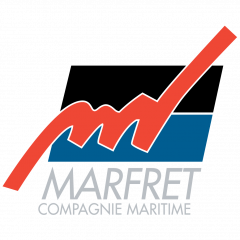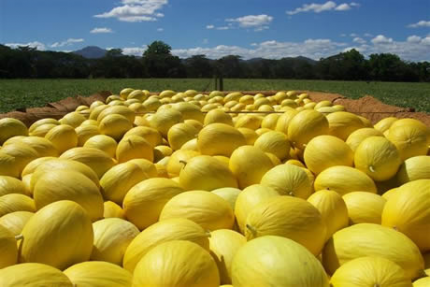Brazil and Costa Rica are the main melon and watermelon exporting countries in South and Central America. After eight months of shipping from Natal to Algeciras, on its Brazil and French Guiana line, Marfret ensures the continuity of supplies to Spain thanks to the Medcar service. January marks the start of the harvest of melons and watermelons grown in Costa Rica and exported from the port of Moin. Until the end of April 2019, the fruit will be picked, sorted, stored and transported in reefer containers to the consumer markets.
In Costa Rica, the Cantaloupe and watermelon harvesting campaign is in full swing from January to April. Each year, Marfret transports these fruits on the weekly Mediterranean Caribbean line (MedCar) which serves Spain. In winter, when production ceases in Europe, the warmer climate of Central and South America allows a continuous off season supply Europe, which, jointly with the USA, is the main destination for Costa Rican melons.
The activity is concentrated through Moin, the main shipping port for melons and watermelons. “This campaign coincides with the Easter holidays in Spain, where supermarkets use exotic fruits as their flagship product. The melons are shipped to Italy and Spain at a time when these countries no longer have local production,” explains Céline Douvenou, reefer sales manager for the Medcar line in Marfret.
Repositioning empties and technical detail
Just before deliveries begin, Marfret is already in the starting blocks. The MedCar team are in the vanguard having previously worked on the pre-positioning of 40-foot reefer containers in order to facilitate export logistics operations. Because shipping cantaloupe melons and watermelons requires a well-oiled machine: “The supply chain must be controlled because these are fragile fruits. Our fruit terminal is located directly adjacent to the quays at the port of Moin, and thus we contribute to the free flow of the goods as they pass through the port complex and to the loading quay. We allow, and encourage, exporters to visit our depot manager so that they can improve their technical knowledge and enable them to safely stow and stuff the containers more easily once they arrived at the farms,” explains Céline Douvenou. Road hauliers arrive at the farms, with containers placed on their chassis, which allows them to be stuffed directly from the warehouse at 7°.
Export of Costa Rican and Brazilian melons to Italy
Previously dominated by Mexico, the market from Central America now has to deal with Costa Rica, whose rich soil is favourable to the cultivation of these two fruits. Previously known for growing sorghum, rice, maize and coffee, Costa Rica has entered the market for melons and watermelons, grown in Nandayure, a region renowned for its fertile soils. The growth in this market is such that these two fruits alone now account for 10% of all of the country’s exports. Melon volumes from Central America to Europe have increased significantly and are increasingly important to the Costa Rican economy.
Melons are also successful diversification for Brazil and complement its mango and pineapple production. The cantaloupe melon is grown in the Mossoro region, 180 km from Natal, unlike mangoes, which require transporters to travel more than 1,000 km to reach the Petrolina fazendas.
“For Marfret, Brazilian melons represent 45% of shipments, ahead of mangoes (28%) and bananas (22%). In 2018, production remained stable but the volumes that we transported increased by 8%,” commented Patrice Le Bras, sales manager for the South American line, which ships fruit ex Natal and Fortaleza and serves Europe via the ports of Algeciras and Rotterdam. The MedCar line, which calls at Genoa and Livorno, supplies Italian wholesalers. On the shelves of Italian markets, fruits and vegetables of various origins mix, including melons and watermelons from Costa Rica.

